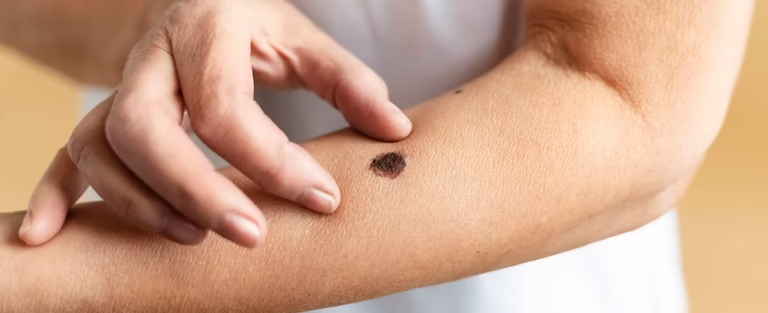Florida’s sunshine is part of what makes living in the Tampa Bay area so great—but with that sunshine comes a higher risk of skin cancer. At Meira Dermatology in Largo, FL, we see patients from Clearwater, Belleair, Seminole, and throughout the region who are concerned about changes in their skin. Whether it’s a new mole or a suspicious spot that won’t heal, early detection is critical.
Dr. Holly Pohler, APRN, DCNP, leads our dermatology team, which is excellent at finding and treating all kinds of skin cancer. We assist our patients stay safe and proactive about their skin health by giving them full-body skin inspections, biopsies, and information.
Why Is Skin Cancer So Common in Florida?
Florida residents are exposed to intense UV radiation year-round, whether from long days at the beach, outdoor sports, or everyday sun exposure while driving. This increases the lifetime risk of developing:
- Basal Cell Carcinoma (BCC) – The most frequently diagnosed skin cancer. Often appears as a pearly bump or red patch.
- Squamous Cell Carcinoma (SCC) – Can appear as a scaly or crusted lesion and may grow deeper if untreated.
- Melanoma – The most dangerous form, melanoma can spread quickly but has a high cure rate if caught early.
At Meira Dermatology, we regularly detect and treat all three.
What Are the Warning Signs?
Some moles and pigmented lesions are not dangerous, but some can be early indicators of skin cancer. That’s why you should keep an eye on your skin for changes. Dr. Holly recommends using the ABCDE rule to monitor moles and pigmented spots:
- A – Asymmetry: One half of the mole doesn't match the other
- B – Border: The edges are uneven, blurred, or ragged
- C – Color: There are more than one color or uneven tones in the same spot
- D – Diameter The mole is bigger than 6mm (about the size of a pencil eraser)
- E – Evolving: The mole changes shape, size, color, or behavior over time
Other red flags include:
- A mole that itches or bleeds
- A spot that doesn’t heal after a few weeks
- Dark streaks under the nails or strange colors on the palms or soles
If you see any of these signs, it’s time to schedule a skin check.

What Happens During a Skin Check at Meira Dermatology?
At our Largo clinic, a full-body skin exam is a simple, non-invasive appointment. Dr. Holly or another licensed provider will carefully examine your skin from head to toe using a dermatoscope (a magnifying light) to evaluate any lesions or suspicious moles.
If anything looks concerning, we may recommend a biopsy—a quick, in-office procedure that tests the tissue for cancerous cells. If a skin cancer is confirmed, we’ll discuss your treatment options, which may include:
- Excision or surgical removal
- Topical chemotherapy creams
- Cryotherapy (freezing)
- Mohs surgery (when appropriate)
- Ongoing monitoring and follow-up care
Why Trust Dr. Holly and Meira Dermatology?
Dr. Holly Pohler has been caring for patients across Tampa Bay since 2009 and has extensive experience in medical dermatology, surgical procedures, and skin cancer detection. As a clinical preceptor and board-certified dermatology nurse practitioner, she brings both expertise and compassion to every visit.
At Meira Dermatology, our mission is rooted in faith, excellence, and a personalized approach to care. We take time to explain your results and make sure you feel comfortable every step of the way.
Have you noticed a new or changing mole? Don’t wait and wonder. Early detection can save lives. Schedule your full-body skin exam with Meira Dermatology in Largo today—serving Tampa Bay, Clearwater, Seminole, and beyond. Call us now or book an online appointment for expert care you can trust.
Don’t wait until it’s too late. Annual skin exams are essential — and possibly lifesaving.
Meira Dermatology — Providing Expert Skin Cancer Screenings to Largo, Clearwater, Seminole, Belleair, and All of Tampa Bay

